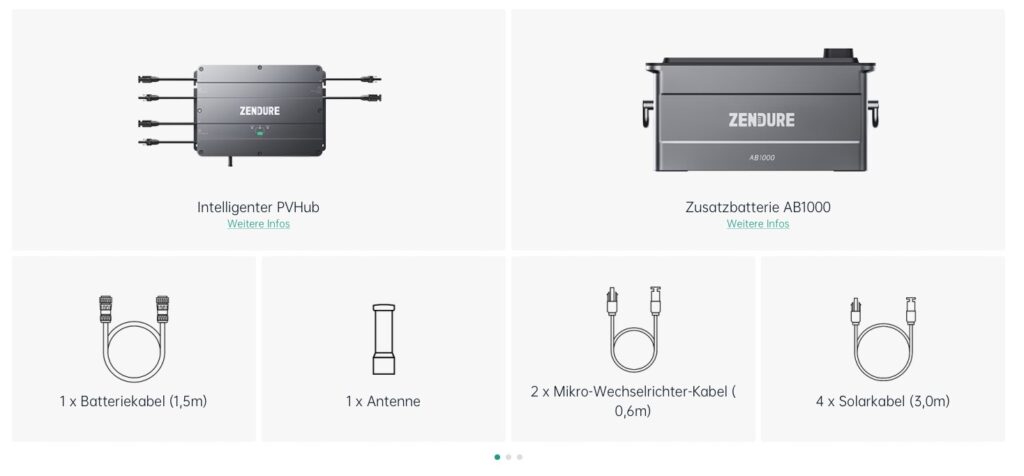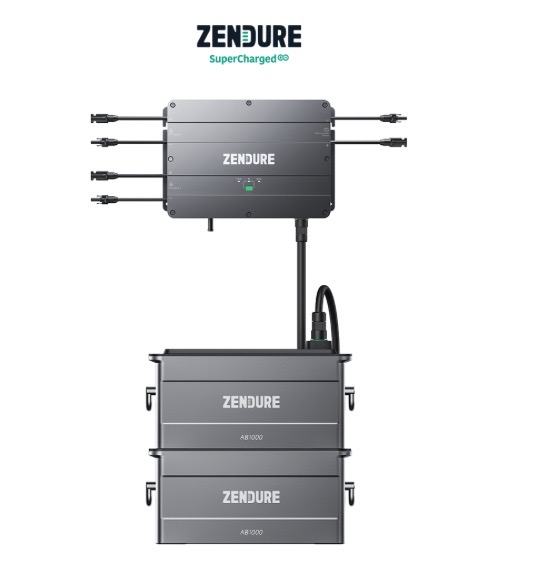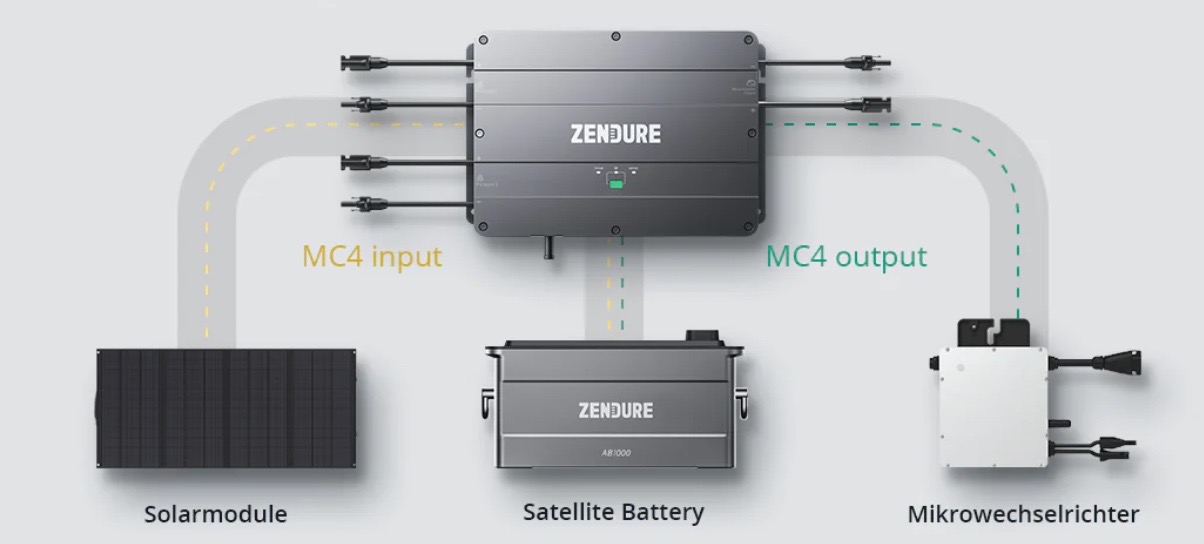
Solar Flow balcony power plant storage launch and news
Many of us have waited a long time and now it has finally begun, the launch of the Solarflow balcony power plant storage. As always, I would like to recommend the previous articles to those who are new to this series of articles and do not yet know the solution in such detail. Zendure’s Solarflow solution is explained in detail here. In the meantime, Zendure has also provided a detailed FAQ on its sales page. And if that’s not enough, I recommend the Solarflow Facebook group, where you can always find the latest information about the system.
And now the Zendure Solarflow balcony power plant storage has been launched and at prices that, in my opinion, make a balcony power plant storage really useful for the first time.
Let´s look at the table below:
| PVhub with accessories and 1 battery, 960 Wh | €1.175,63 EUR |
| PVhub with accessories and 2 batteries, 1,920 Wh | €1.511,76 EUR |
| PVhub with accessories and 3 batteries, 2,880 Wh | €2.015,97 EUR |
| PVhub with accessories and 4 batteries, 3,840 Wh | €2.520,17 EUR |
Here is the scope of delivery of the device:

Anyone who chooses the Solarflow solution from 6.4.23 to 9.4.23 will receive a smart plug free of charge in addition to the usual accessories. This is a smart socket which, like the Solarflow, can be integrated into the app.
I’m really excited about the pricing. In my opinion, the Solarflow solution marks a new low point in the price spiral compared to the competition and at the same time is modularly expandable, can be combined with almost any inverter and is suitable for outdoor use.
To be fair, alternative solutions such as Minitower 1 (either 1 or 2 kWh) and Solmate (1.44 kWh) cannot be compared 100% with Solarflow either.
Minitower 1 and Solmate are solutions that include the inverter, Solmate also includes off-grid blackout provision, while Solarflow can be used to supplement an existing balcony power plant. Personally, I prefer the latter because I prefer to choose which inverter I want to use myself.
I have a preference for the inverters from Hoymiles, since the OPEN DTU and AhoyDTU open source projects were started here, which enable cloud-free control of various inverter data and, above all, power limitation. If you combine a Hoymiles inverter and a central consumption meter such as the Poweropti from the manufacturer Powerfox with a smart home control center such as the widespread Home Assistant solution, you can come up with some intelligent control scenarios.
Anyone who follows the Solarflow group closely on Facebook will have noticed that Zendure Home Assistant also wants to support them. Since I also use Home Assistant, I am personally very excited about this support. The scenario I want to realize is the following:
Depending on the power consumption in the house (measured via Poweropti), I would like to be able to switch the output power of the PVhub and, if necessary, the output power of the Hoymiles inverter. Depending on the power consumption, I can control how much solar energy is fed into the home grid and how much energy is used to charge the Solarflow batteries. In addition, scenarios would also be conceivable, such as setting the output power of the PV hub depending on the state of charge of the batteries. I have plenty of ideas as soon as Home Assistant integration is possible.
Currently, the schedule for all buyers is as follows:

As soon as I have put Solarflow into operation, I will of course give you a detailed report and answer your questions as best I can.
As always, I look forward to your feedback, whether positive or critical, your Chris

